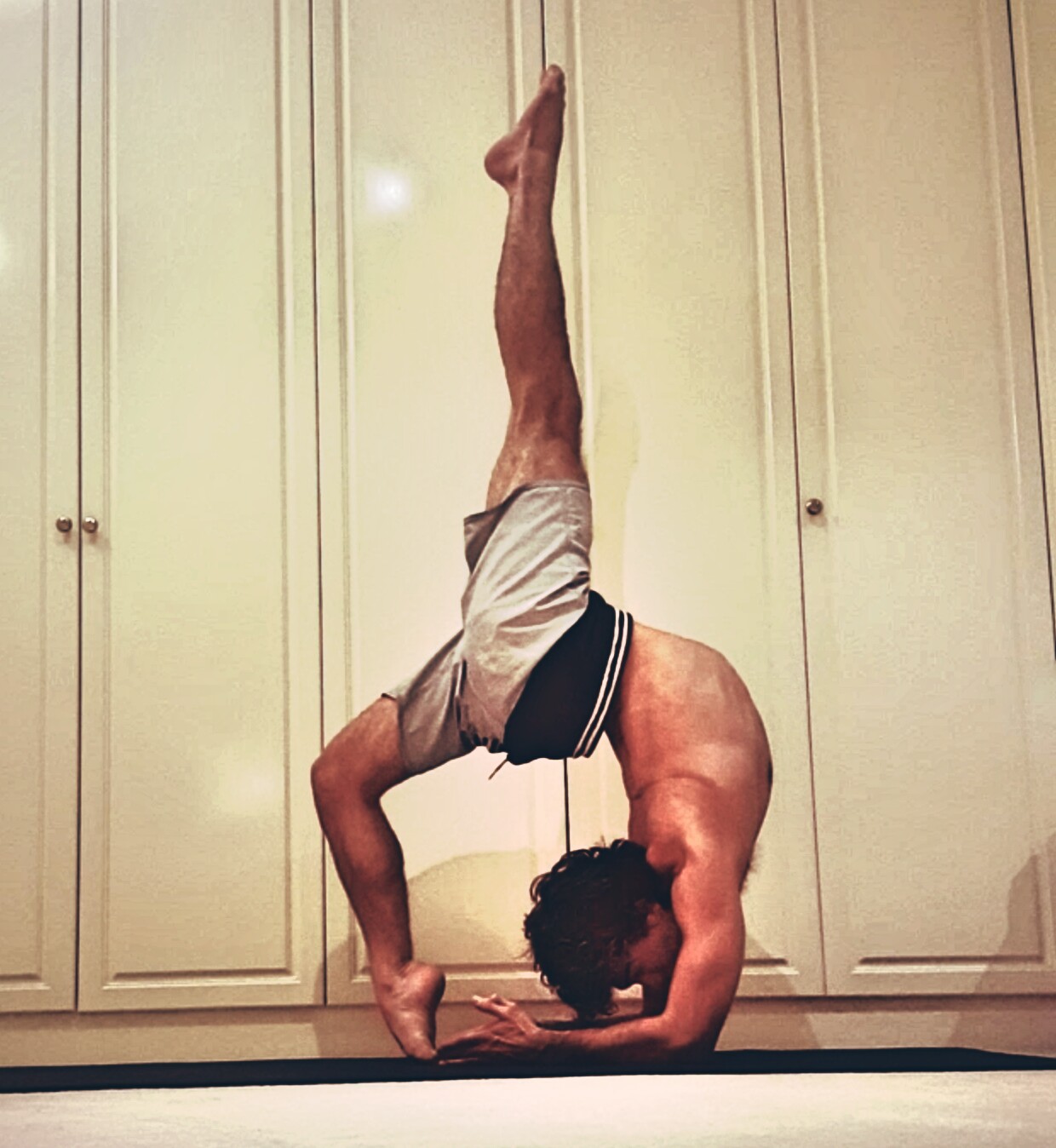Eka Pada Viparita Dandasana II.
In Light on Yoga, Iyengar ranks the poses according to difficulty. 1 being the easiest and 60 being the hardest. This pose is given a 29. (Though the heel should be grabbed in the final posture).
When analysed, the ranking reveals stark differences between traditional eastern body types and western body types. For example, Supta Virasana is given a 2, Malasana a 2, Baddha Konasana is given a 3 and Padmasana a 4.
For the average person who grew up sitting on chairs through 16 years of school and university, these basic sitting poses can (for many) represent far greater challenges than the more difficultly ranked arm balances, back bends and inversions.
This is where following the recommended sequences in Light on Yoga (or the ashtanga primary/secondary series) can require modification for individual limitations.
Many people need to learn to fully squat, lunge and sit for extended periods, and these movement patterns can be incorporated into the yoga practice to overcome the physical deficits that many people have when beginning to learn and progress in yoga.
Former Iyengar student Shandor Remete explains that preparation postures were always a part of yogic teachings (according to cave sculptures and ancient texts), but got lost in recent times.
Its important to consider this when designing a practice for yourself or others.
